 |
 |
Our enthusiastic and extremely knowledgeable perennials team is here to answer your questions and help you choose the best perennials for your situation. There’s always something in bloom for sun, shade, butterflies, birds or deer resistance as well as a variety of bulbs for your space.
Stroll through our time-tested favorites and introduce yourself to the newest varieties. We garden with perennials too; we love them and it shows!
|
67 found, showing page 3 of 5
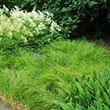
Low, clumping, chartreuse grass-like foliage. Naturalizing. Native. USDA 3-8
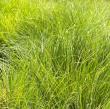
Dense, mounding, native variety. Wonderful when planted in masses. USDA 3-8
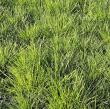
Rich-green fronds have a dense, upright growth habit. White, puffy plumes in late summer. USDA 4-9
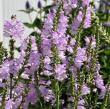
Pink blooms. Compact habit. Slow spreading cultivar. USDA 3-9
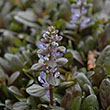
Naturalizing groundcover with short spikes of blue flowers on chocolate-colored foliage with burgundy highlights. USDA 3-9.
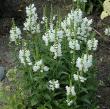
Height: 3 feet
Spacing: 30 inches
Sunlight: full sun partial shade
Hardiness Zone: 2a
Other Names: False Dragonhead
Ornamental Features:
Miss Manners Obedient Plant has masses of beautiful spikes of white hooded flowers rising above the foliage from mid summer to early fall, which are most effective when planted in groupings. The flowers are excellent for cutting. Its pointy leaves remain dark green in color throughout the
season.
Landscape Attributes:
Miss Manners Obedient Plant is an herbaceous perennial with an upright spreading habit of growth. Its medium texture blends into the garden, but can always be balanced by a couple of finer or coarser plants for an effective composition.
This is a relatively low maintenance plant, and is best cleaned up in early spring before it resumes active growth for the season. It is a good choice for attracting butterflies to your yard. It has no significant negative characteristics.
Miss Manners Obedient Plant is recommended for the following landscape applications:
- Mass Planting
- General Garden Use
Planting & Growing:
Miss Manners Obedient Plant will grow to be about 30 inches tall at maturity, with a spread of 3 feet. When grown in masses or used as a bedding plant, individual plants should be spaced approximately 30 inches apart. It tends to be leggy, with a typical clearance of 1 foot from the ground, and should be underplanted with lower-growing perennials. It grows at a medium rate, and under ideal conditions can be expected to live for approximately 10 years. As an herbaceous perennial, this plant will usually die back to the crown each winter, and will regrow from the base each spring. Be careful not to disturb the crown in late winter when it may not be readily seen! This plant does best in full sun to partial shade. It is very adaptable to both dry and moist locations, and should do just fine under typical garden conditions. It is not particular as to soil type or pH. It is highly tolerant of urban pollution and will even thrive in inner city environments. This is a selection of a native North American species. It can be propagated by division; however, as a cultivated variety, be aware that it may be subject to certain restrictions or prohibitions on propagation.
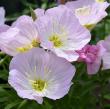
Light pink blooms. Long blooming, easy care plant. Naturalizes quickly. USDA 5-9
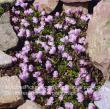
Lilac blooms. Dense groundcover. Light foot traffic. USDA 5-9
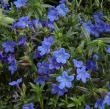
Bright purpley blue blooms. Deep green foliage. Groundcover. USDA 6-8
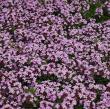
Pink blooms. Fragrant foliage. Evergreen. Moderate foot traffic. USDA 5-8
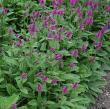
Rose-lavender blooms. Dense glossy foliage. Clumping Habit. USDA 4-8
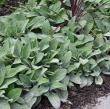
Silvery green foliage. Flowering stems are rare. USDA 4-9
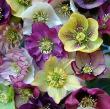
Singe and double blooms in multiple colors. Compact. USDA 4-8
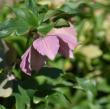
Height: 18 inches
Spacing: 14 inches
Sunlight: partial shade, full shade
Hardiness Zone: 4a
Other Names: Pine Knot Best Strain, Lenten Rose, Winter Rose
Group/Class: Pine Knot Select Mix
Description:
Large nodding buttercup-type single to semi-double blooms are a wide mix of colors, including various shades and tints of white, pink, red, purple, and yellow; great in woodland gardens and on shaded slopes
Ornamental Features:
Pine Knot Select Hellebore features showy nodding rose cup-shaped flowers with purple overtones at the ends of the stems from late winter to early spring. Its glossy oval compound leaves emerge lime green in spring, turning bluish-green in color the rest of the year.
Landscape Attributes:
Pine Knot Select Hellebore is an herbaceous evergreen perennial with an upright spreading habit of growth. Its medium texture blends into the garden, but can always be balanced by a couple of finer or coarser plants for an effective composition.
This is a relatively low maintenance plant, and should be cut back in late fall in preparation for winter. Deer don't particularly care for this plant and will usually leave it alone in favor of tastier treats. It has no significant negative characteristics.
Pine Knot Select Hellebore is recommended for the following landscape applications:
- Mass Planting
- Rock/Alpine Gardens
- Border Edging
- General Garden Use
- Naturalizing And Woodland Gardens
Planting & Growing
Pine Knot Select Hellebore will grow to be about 14 inches tall at maturity, with a spread of 18 inches. When grown in masses or used as a bedding plant, individual plants should be spaced approximately 14 inches apart. Its foliage tends to remain dense right to the ground, not requiring facer plants in front. It grows at a medium rate, and under ideal conditions can be expected to live for approximately 5 years. As an evegreen perennial, this plant will typically keep its form and foliage year-round.
This plant does best in partial shade to shade. It does best in average to evenly moist conditions, but will not tolerate standing water. It is not particular as to soil pH, but grows best in rich soils. It is somewhat tolerant of urban pollution, and will benefit from being planted in a relatively sheltered location. This particular variety is an interspecific hybrid, and parts of it are known to be toxic to humans and animals, so care should be exercised in planting it around children and pets. It can be propagated by division; however, as a cultivated variety, be aware that it may be subject to certain restrictions or prohibitions on propagation.
67 found, showing page 3 of 5



